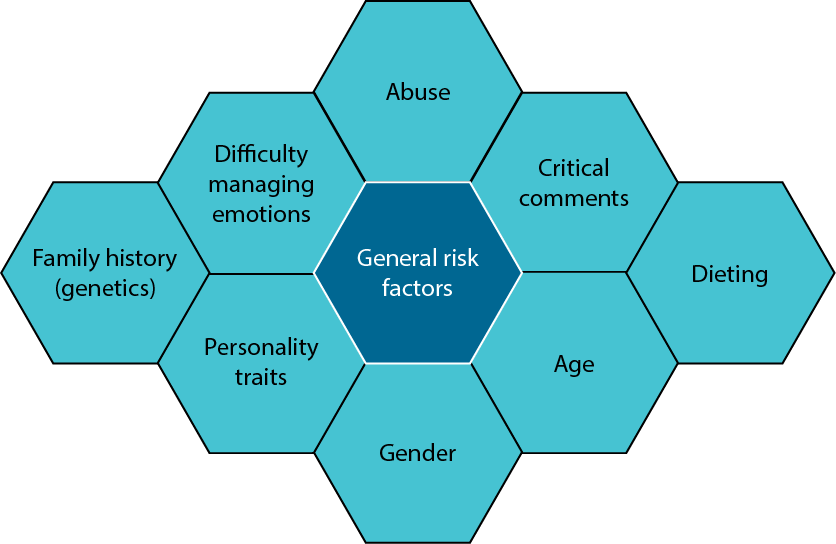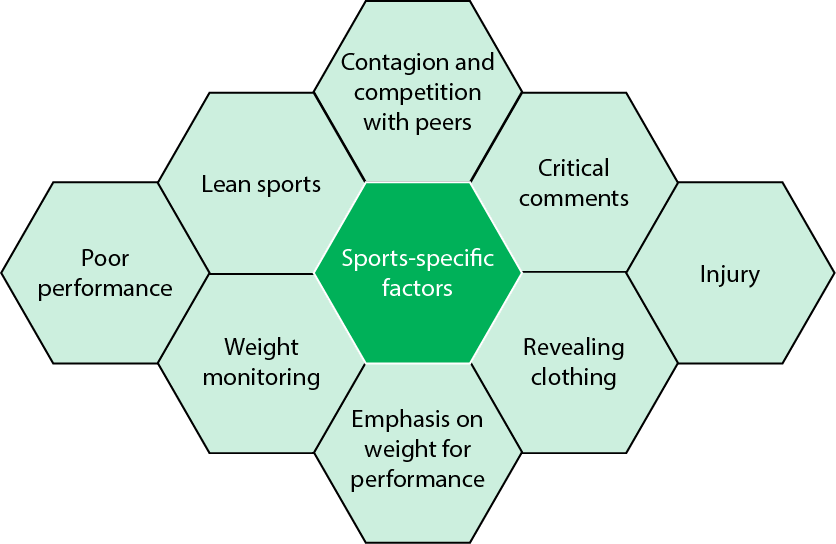3. Prevalence of eating disorders
3.1 Prevalence of eating disorders
How common are eating problems among athletes?
- It is estimated that around 1% of the general population have a clinical eating disorder7
- In the sports context, estimates suggest up to 20% of elite female and 8% elite male athletes meet the criteria for a clinical eating disorder8.
- Up to 40% of athletes show signs of disordered eating9.
- Elevated levels of eating problems are particularly apparent in sports which emphasise leanness. This includes sports where being lean might be considered an advantage for performance, such as aesthetic sports (e.g., gymnastics; where participants are partly judged on their appearance); endurance sports (e.g., distance running) and weight category sports (e.g., boxing; where power to weight ratios are important for performance). Have a look at Figure 3.2, which shows which sports demonstrate the highest level of eating problems8.
- To view the data, mouse over (or touch if you're viewing this on a mobile device) any of the bars.
Figure 3.2: Prevalence of eating disorders by sport and gender. To view individual statistics, mouse over any of the bars.
3.2 Risk Factors for Eating Disorders
There are many reasons why individuals develop an eating disorder. They can affect individuals of any age and gender, but are most commonly seen among young females. There are some general risk factors that affect everyone, but there are also some aspects of the sporting environment that can contribute towards unhealthy eating and exercise practices in athletes.
General risk factors for eating disorders include10:
- Genetic vulnerabilities - There is not a single gene for eating disorders, but they are more common among first degree relatives of sufferers.
- Age and gender - Eating disorders are more common among females aged 15-30 years.
- Dieting is a well-established precursor to more extreme eating behaviours
- Social pressure to be thin (e.g., from the media, from peers etc).
- Additional general risk factors are shown in Figure 3.3.

Figure 3.3: General risk factors for Eating Disorders
As previously outlined, athletes also face additional risk factors as a result of taking part in competitive sport11.The addition of these extra risk factors is thought to explain why the incidence of eating disorders in athletes is higher than for the general population. Sport specific risk factors include11:
- Practices which draw attention to the body and/or promote comparison with others; e.g., the requirement to wear revealing clothing for competition, weight monitoring, or emphasising the importance of weight and body shape for performance
- Eating problems can be triggered by injury, critical comments about weight and poor performance.
- Individuals who experience high levels of performance anxiety, fear of failure and high levels of perfectionism and expectation may be more prone to eating problems.
Additional sports specific risk factors are shown in Figure 3.4.

Figure 3.4: Sport specific risk factors for eating disorders
You have now reached the end of Module 1. In order to ‘unlock’ module 2, please complete the following quiz.